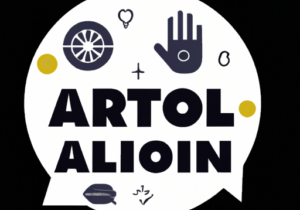Generating leads is a pivotal cornerstone of any successful B2B sales process, as it serves as the lifeblood of business growth and revenue enhancement. Nonetheless, the landscape of lead generation has become increasingly complex and competitive in today’s marketplace, presenting unique challenges. In this comprehensive blog post, we’ll delve deep into various strategies and techniques that can empower you to navigate these challenges effectively, ensuring a robust and consistent flow of leads in your B2B sales journey. From leveraging data-driven insights to nurturing relationships and employing the latest digital marketing tactics, we’ll equip you with the knowledge and tools to thrive in this dynamic environment, ultimately achieving your lead generation goals.
Identifying Your Target Market
First, it’s essential to understand your target market. Knowing who your ideal customer is and what they’re looking for is the foundation of any lead generation strategy. Researching and identifying your target market can be done through surveys, interviews, and analyzing your current customer base. Once you have a clear understanding of your target market, you can create buyer personas to better understand their needs and pain points.
How To Create a Lead Magnet
A lead magnet is a valuable piece of content or offer that entices potential customers to give you their contact information in exchange for something of value. Lead magnets can be used to generate leads by providing potential customers with valuable information or solutions to their problems. By providing a lead magnet, you can attract potential customers to your website and convert them into leads.
There are many types of lead magnets that work well in B2B sales, including:
- Ebooks: These are a great way to provide in-depth information on a specific topic. They can be used to educate potential customers on a product or service, or to provide valuable information on a particular industry or market.
- Webinars: Webinars are a great way to provide valuable information and solutions in real-time. They can be used to demonstrate a product or service, or to provide information on a particular industry or market.
- Free Trials: Offering a free trial of your product or service can be a great way to generate leads. It allows potential customers to test out your product or service before making a purchase.
- Whitepapers: Whitepapers are a great way to provide in-depth information on a specific topic. They can be used to educate potential customers on a product or service, or to provide valuable information on a particular industry or market.
To create an effective lead magnet, there are a few things to keep in mind:
- Relevance: Make sure your lead magnet is relevant to your target market and addresses a specific pain point or problem they have.
- Value: Your lead magnet should provide valuable information or solutions to your target market.
- Format: Consider the format of your lead magnet, whether it’s an ebook, webinar, free trial, or whitepaper, it should be easy to consume and accessible to your target market
- Call to action: Include a clear call-to-action that encourages potential customers to provide their contact information in exchange for your lead magnet.
By understanding the importance of lead magnets, the types that work well in B2B sales and following tips for creating an effective lead magnet, you can attract more leads to your website and convert them into paying customers.
How To Build a Lead Generation Website
Your website is a crucial tool for lead generation. Having a website that is optimized for lead generation means making it easy for visitors to find what they’re looking for and convert into leads. A website that is optimized for lead generation is easy to navigate, mobile-friendly and has a clear call-to-action. By making it easy for visitors to find what they’re looking for and convert into leads, you can increase the number of leads you generate.
To design a website that converts visitors into leads, there are a few best practices to keep in mind:
- Navigation: Make sure your website is easy to navigate. This means using a clear navigation menu and organizing your content in a logical and easy-to-understand way.
- Design: Your website’s design should be visually appealing, easy to read, and easy on the eyes. Make sure your website is optimized for mobile and has a responsive design.
- Content: Make sure your website’s content is relevant, valuable, and up-to-date. Your website’s content should be written in a way that is easy to understand and provides value to your target market.
- Call-to-action: Include a clear call-to-action on your website that encourages visitors to provide their contact information.
Landing pages and forms are essential tools for capturing leads on your website. Landing pages are standalone pages that are designed to convert visitors into leads. They should be optimized for lead generation and should include a form that visitors can fill out to provide their contact information. Forms are used to collect contact information from visitors, such as name, email, and phone number. To optimize your landing pages and forms for lead generation, make sure they are visually appealing, easy to fill out, and include a clear call-to-action.
By optimizing your website for lead generation, you can increase the number of leads you generate and convert more visitors into paying customers. Make sure your website is easy to navigate, visually appealing and includes a clear call to action. Use landing pages and forms to capture leads, and you can increase the number of leads you generate.
How To Generate Business Leads Through Social Media
Social media is a powerful tool for reaching your target market and generating leads. By creating valuable and engaging content, you can attract potential customers to your website and convert them into leads. Platforms like LinkedIn and Twitter are particularly effective for B2B lead generation. To reach your target market on social media, you should research and identify the platforms your target market is most active on and create a presence on those platforms.
To create social media content that generates leads, there are a few best practices to keep in mind:
- Relevance: Make sure your social media content is relevant to your target market and addresses a specific pain point or problem they have.
- Value: Your social media content should provide valuable information or solutions to your target market.
- Engagement: Encourage engagement by asking questions and starting conversations. The more engagement your content receives, the more visibility it will have, and the more leads it will generate.
- Call to action: Include a clear call to action in your social media content that encourages potential customers to visit your website and provide their contact information.
There are many tools and platforms that can help you automate and optimize your social media lead generation. These tools allow you to schedule and publish your social media content, as well as track and analyze your social media performance. Additionally, social media advertising platforms like LinkedIn and Twitter can help you reach a larger audience and generate more leads.
By using social media to reach your target market, creating social media content that generates leads and utilizing tools and platforms that can help you automate and optimize your social media lead generation, you can increase the number of leads you generate and grow your business.
How To Generate Leads For Network Marketing
Networking is a powerful tool for generating leads. By building relationships with industry influencers, attending networking events, and connecting with other businesses, you can increase your visibility and generate leads. To use networking to generate leads, you should attend networking events, join industry groups and organizations, and reach out to potential customers and partners.
Referral marketing is the process of encouraging satisfied customers to refer their friends and colleagues to your business. It’s a powerful way to generate leads because it allows you to leverage the trust and credibility of your existing customers to attract new ones. Building a referral marketing program is important because it provides a steady stream of new leads, which can help you grow your business.
To create a referral marketing program that works, there are a few tips to keep in mind:
- Make it easy: Make it easy for your customers to refer others by providing them with referral cards, flyers or even a referral link.
- Reward your customers: Reward your customers for their referrals with discounts, vouchers or other incentives.
- Use incentives: Use incentives to encourage your customers to refer others, such as offering a prize or a free service.
- Make it personal: Make it personal by calling or emailing your referral prospects to introduce yourself and your business.
By using networking to generate leads and building a referral marketing program that works, you can increase the number of leads you generate and grow your business. Keep in mind that networking and referral marketing are ongoing processes that require effort and consistency.l
Lead Nurturing and Follow-Up
Lead nurturing is the process of building a relationship with a lead over time. It’s essential for converting leads into paying customers. Lead nurturing involves providing valuable information and solutions to a lead at different stages of the buying process. By nurturing leads, you can build trust and credibility with them, which increases the likelihood that they will become paying customers.
Following up with leads is an essential part of the lead nurturing process. To follow up with leads effectively, there are a few best practices to keep in mind:
- Timing: Time your follow-up appropriately. Don’t follow up too soon after a lead has provided their contact information, but don’t wait too long either.
- Personalization: Personalize your follow-up message. Use the lead’s name and address any specific pain points or problems they have.
- Value: Provide value in your follow-up message. Offer a solution or valuable information that addresses a specific pain point or problem the lead has.
- Call to action: Include a clear call-to-action in your follow-up message that encourages the lead to take the next step.
Marketing automation tools can help you streamline your lead nurturing process. These tools allow you to automate repetitive tasks, such as sending follow-up emails, and track the performance of your lead nurturing campaigns. By using marketing automation tools, you can save time and resources and increase the effectiveness of your lead-nurturing campaigns.
Lead nurturing and follow-up are essential components of the lead generation process. By nurturing leads and following up with them effectively, you can increase the likelihood that they will become paying customers. Additionally, using marketing automation tools can help you streamline your lead nurturing process and increase the effectiveness of your campaigns.
Start Generating Leads Today!
By understanding your target market, developing a lead magnet, optimizing your website, leveraging social media, networking, referral marketing, lead nurturing, and follow-up, you can generate more leads and grow your business.
However, lead generation is a continuous process and requires effort and consistency. One tool that can help you with this is the Signals ABM platform. Signals is a platform that helps marketing and sales teams generate more qualified leads by identifying the best-fit accounts, understanding their buying journey, and engaging with them using personalized and data-driven campaigns. Signals provides a single source of truth for account-based marketing and sales activities, that helps teams to align their efforts and achieve better results.
Try Signals ABM platform and experience the benefits it can bring to your lead-generation process. Click here to schedule a personalized demo and see for yourself how Signals can help you generate more qualified leads and grow your business.
READ MORE
Start seeing your Buyers' signals
Signals is helping companies automate, grow, and close sales pipeline with industry-leading predictive intent scoring, lead generation, and real-time engagement.


















